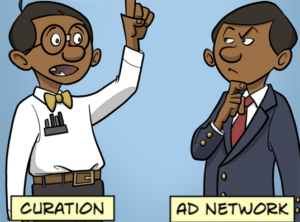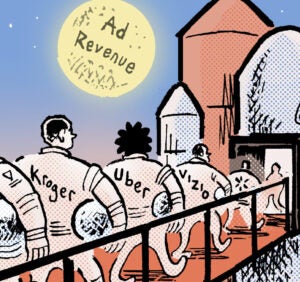 The rise of ad blocking, mobile usage and a general regard for user experience over pure advertising concerns have all led to a renewed focus on one of the digital world’s most fundamental features: the page load.
The rise of ad blocking, mobile usage and a general regard for user experience over pure advertising concerns have all led to a renewed focus on one of the digital world’s most fundamental features: the page load.
From buttons and tracking pixels to preload content and infinite scrolling feeds, the digital community is struggling under the weight of a system that seems saturated with tags, which are dragging down load times and user experience with it.
A broad swath of media companies, including The Washington Post, Condé Nast and ESPN, have overseen recent site makeovers, explicitly citing the clutter of antiquated tags and resultant site latency as motivating factors. Legacy features like flash pixels and right-hand rails are the appendix of the digital world: generally harmless, but liable to do catastrophic damage when something goes wrong.
The effect is that publishers must negotiate a difficult middle ground between satisfying readers and maintaining a viable business.
“Every vendor and agency (and ad revenue team) wants their tags as high up in the page as possible,” said Jeff Chasin, Adobe’s senior architect and evangelist. “Every user experience pro and conversion specialist wishes they were at the bottom of the page, loaded asynchronously.”
Part of the problem is that publishers don’t have off-the-shelf solutions. In addition to the Post, publishers like Gawker and Vox developed their own technologies to address the issue because the right tools didn’t exist on the market.
Ensighten is one of many companies trying to fill that market gap. Its publisher clients are concerned that “user experience takes a hit because lots of conditions and logic chews up browser resources,” said CEO Josh Manion.
As with ad blocking and ad visibility, publishers are on the front lines of an issue that, in reality, requires players across the ecosystem to change their practices. Jay McCarthy, Qubit’s product VP, said he’s “been alarmed at the amount of ‘piggybacking/chaining’ going on in the ad space for some time.”
Ad networks will, for instance, sync pixel calls with other companies, even direct competitors, so that they can get a better sense of individuals being tracked.
Pixel sync calls are a standard process that gives tech vendors and sites a clearer picture of visitors, but at the expense of dozens – even hundreds – of calls back and forth as the page is loading. Qubit has moved toward asynchronous tagging, which “doesn’t ensure accuracy of measurement when redirect chaining occurs [but] it does at least keep things running,” McCarthy said.
“Consider why the challenges of latency and oversaturation of tags exist to begin with,” said Blane Sims, SVP of product at Signal, another firm that specializes in tag management and site latency. Sims pointed to the paradoxical incentives at play, with publishers and marketers needing a better understanding of their audience, which requires more technology and data, which in turn leads to more tag oversaturation.
Chasin even noted that at the most important moments for publishers, such as subscription or purchase pages, the oversaturation is worse. Like watering a plant to death, it’s an easy mistake to make.
Not everyone in the industry suffers from the problem. Facebook’s Instant Articles product, which lets media companies publish directly to the social media platform and then split ad revenue generated via the Facebook Audience Network, was seen by many as co-opting value and data from publishers. Facebook explicitly justified the news service – and got premier publishers to embrace it – because it could guarantee substantially faster page load times.
The suite of publishers that piloted the Instant Articles product saw real value and returns, but they also learned important lessons that had been standard practice at companies like Facebook and Apple, which has since released a competitive news publishing service.
“We’re seeing a trend where our clients are looking to own more of their data,” Manion said.
He and other executives agreed that third-party tags, from tech companies that do data collection, analytics or tracking, are likely to come under new scrutiny from publishers looking to clean house, not just sweep latent vendors under the rug.
Ad fraud took on new prominence when funding sources, including brands and their agencies, made verification a part of their budget decisions. For the hundreds of tech vendors, data collectors and ad networks that live off the supply side of the ecosystem, the fact that publishers are starting to pull plugs has jumpstarted a similar frenzy of products and pitches on the market.












